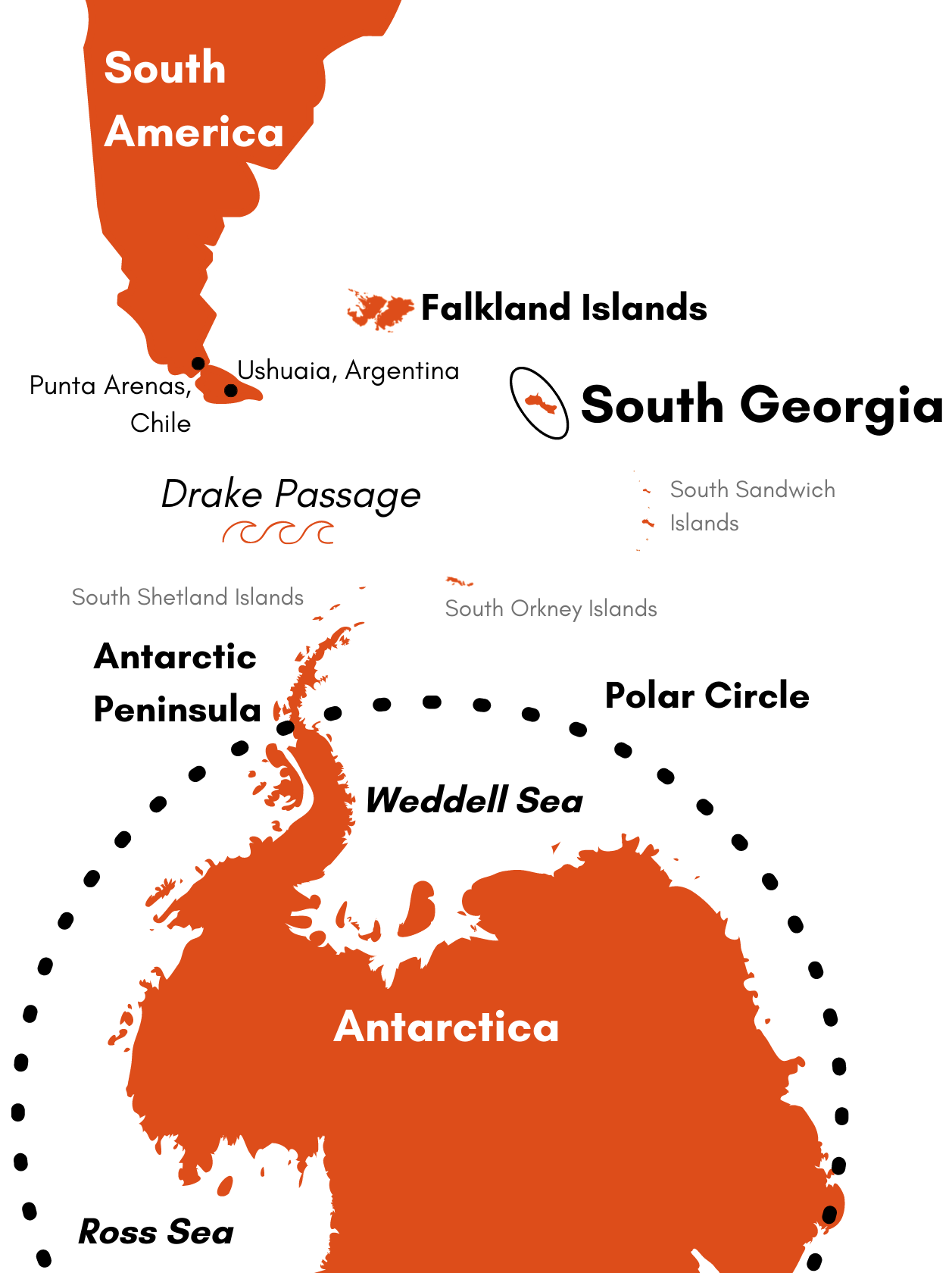South Georgia and the South Sandwich Islands are a British Overseas Territory in the southern Atlantic Ocean. With a collection of islands, consisting of the main South Georgia Island and a chain of smaller islands known as the South Sandwich Islands, it is one of the remotest and wildest places on earth.
South Georgia itself is a small island only 176km long, but with a 3,000m snow-capped mountain range, with some of the world’s largest congregations of wildlife and a truly fascinating human history. Let Sir David Attenborough inspire you and watch his short video ‘South Georgia – A Visitor’s Guide’.
South Georgia Overview
Geography & Climate
The very mountainous South Georgia Island is mostly barren with giant peaks and glacier filled gorges. The largest is the Fortuna Glacier on the island’s north eastern side.
Polar weather on South Georgia means low temperatures and westerly winds year round. Over spring and summer, when voyages explore the area, average temperatures range from 5 or 6 °C in Oct/Nov to 8 or 9 °C in Feb/Mar.
Wildlife
South Georgia and the surrounding seas are home to a wide variety of birds and mammals. The islands have been deemed an ‘Important Bird and Biodiversity Area‘ by BirdLife International. Albatross, skuas, terns, petrels, shags and more can be found on the islands. This is in addition to the thousands strong King Penguin colonies across South Georgia.
Activities
South Georgia offers many coves, cliffs and beaches to explore. Walking, photography, birding and visiting historical sites like the Grytviken whaling station are activity highlights.
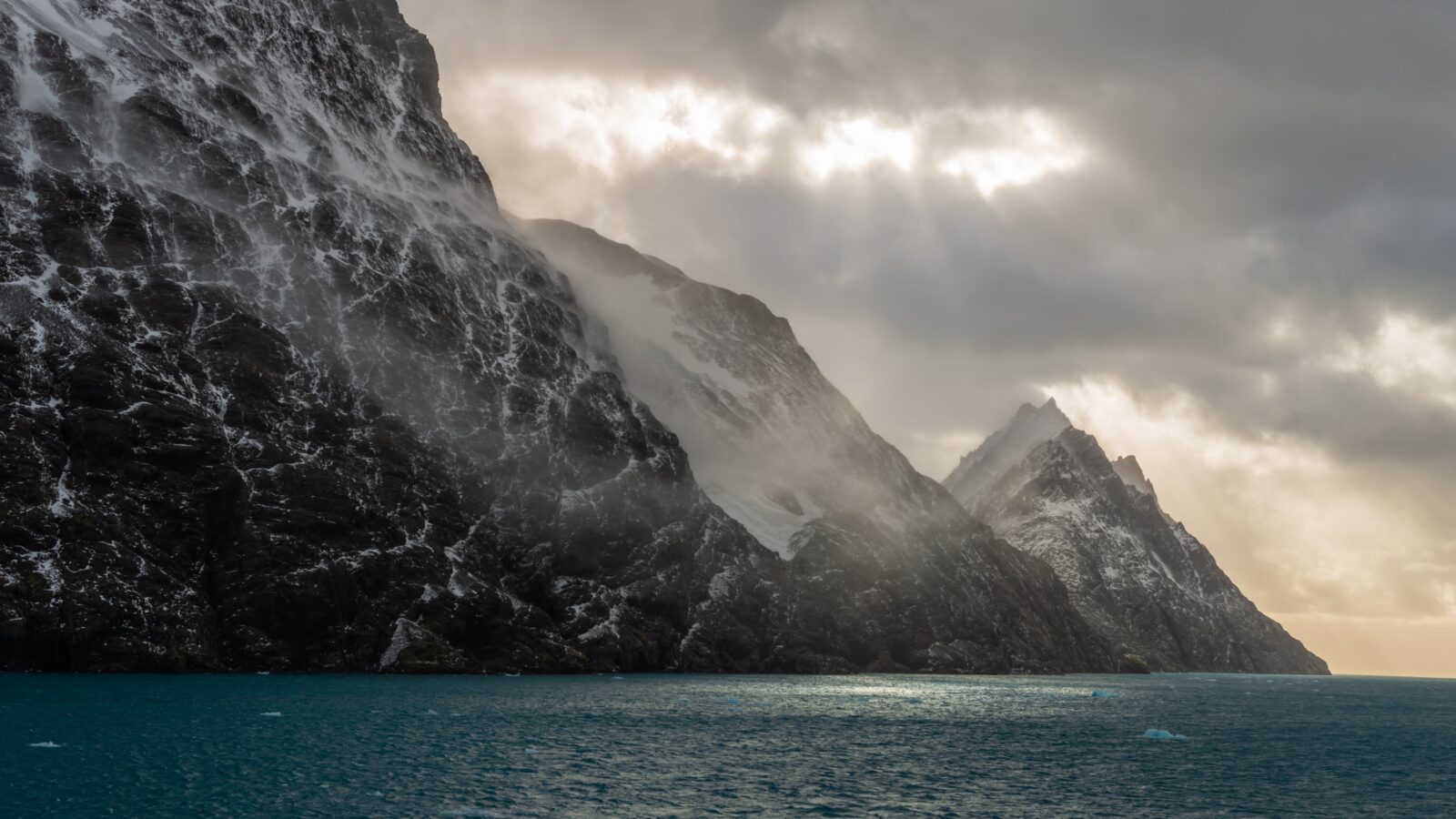
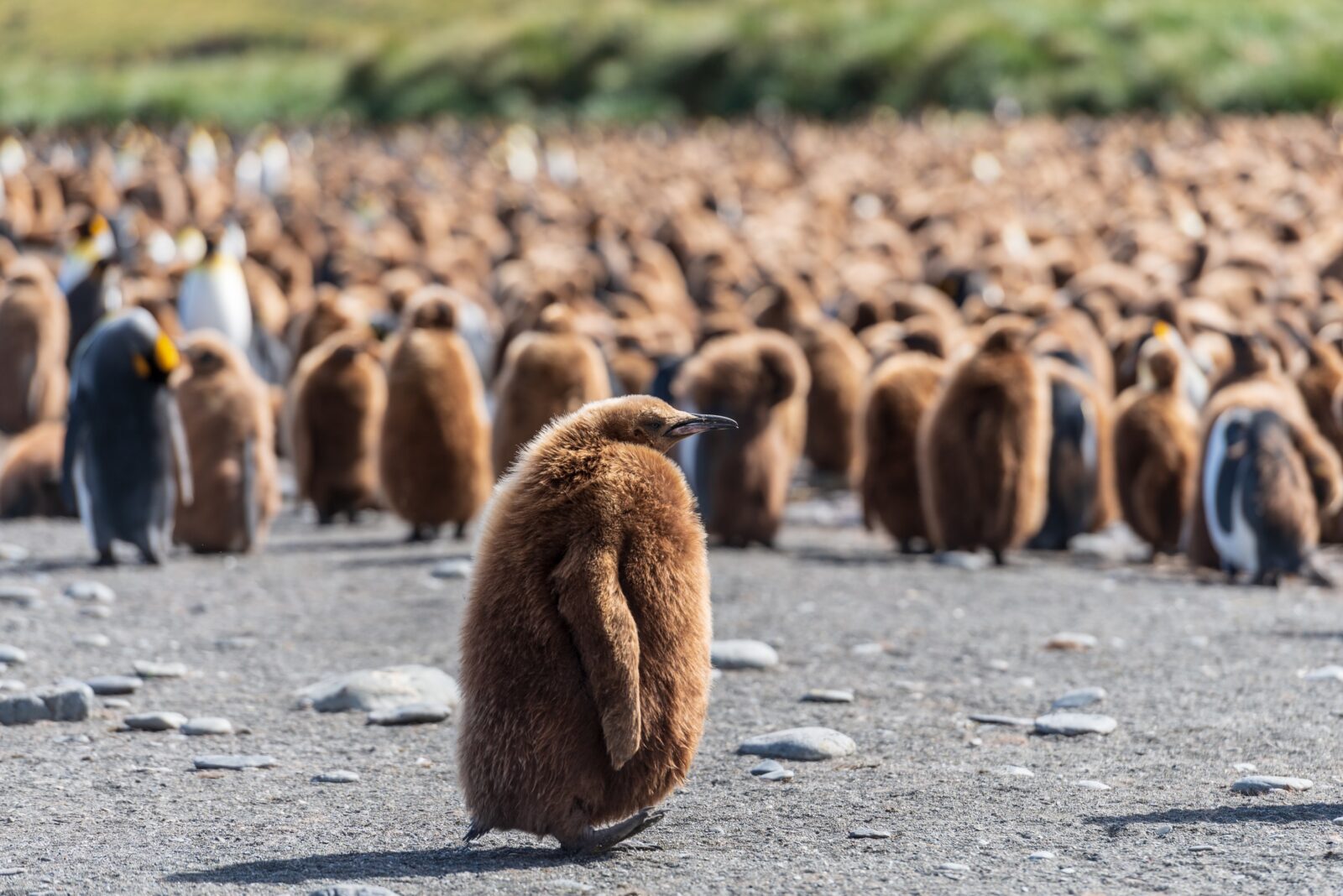
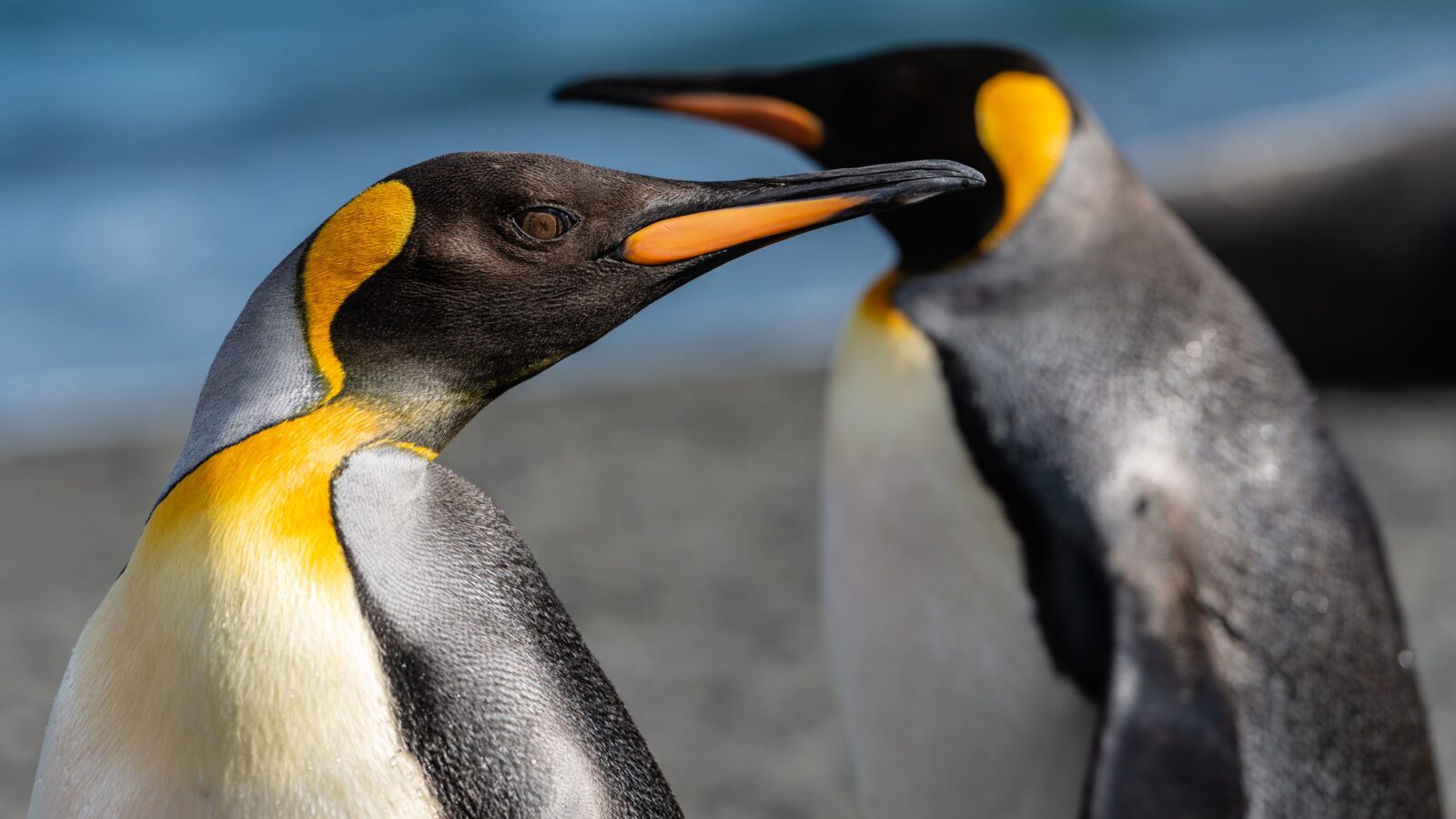
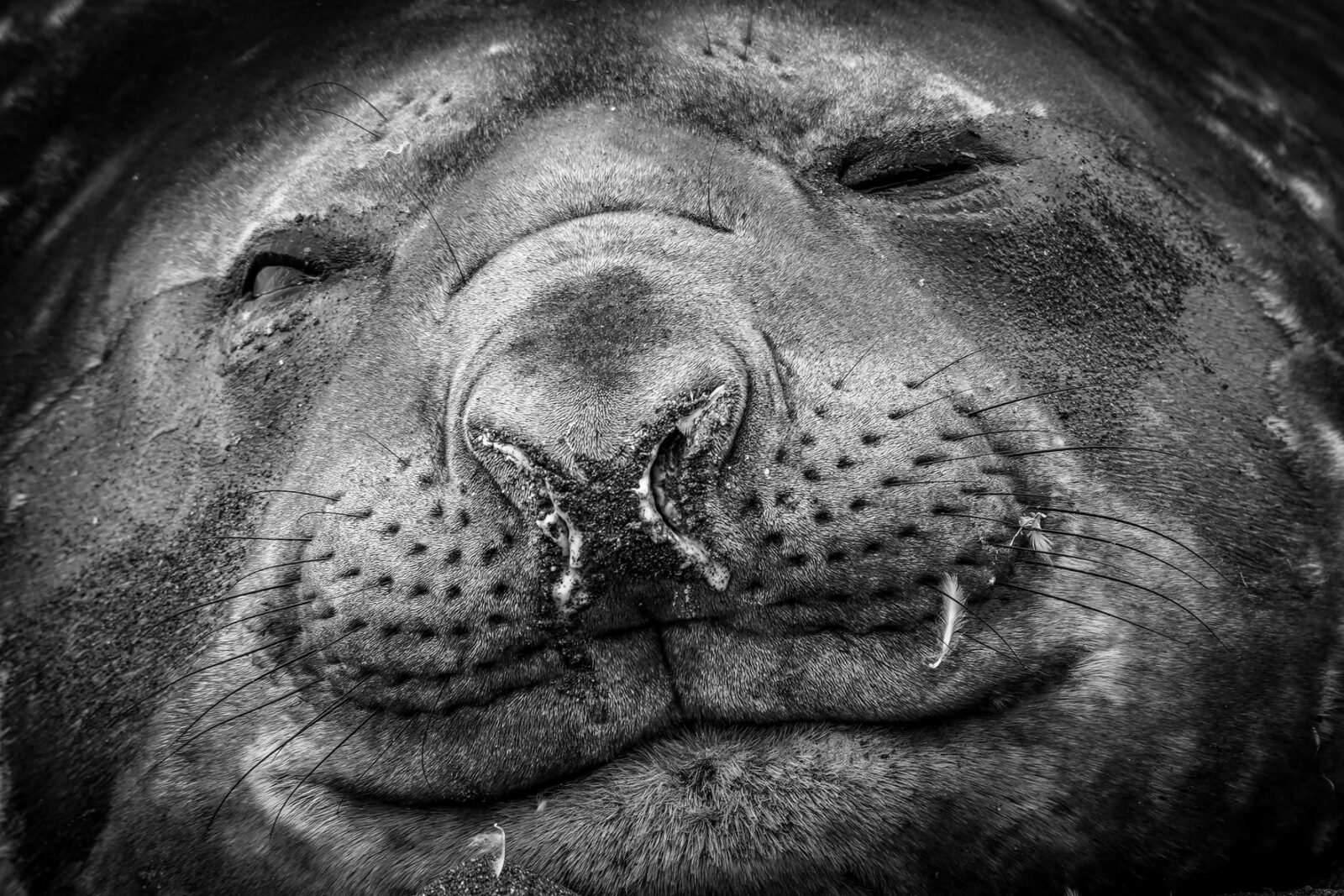
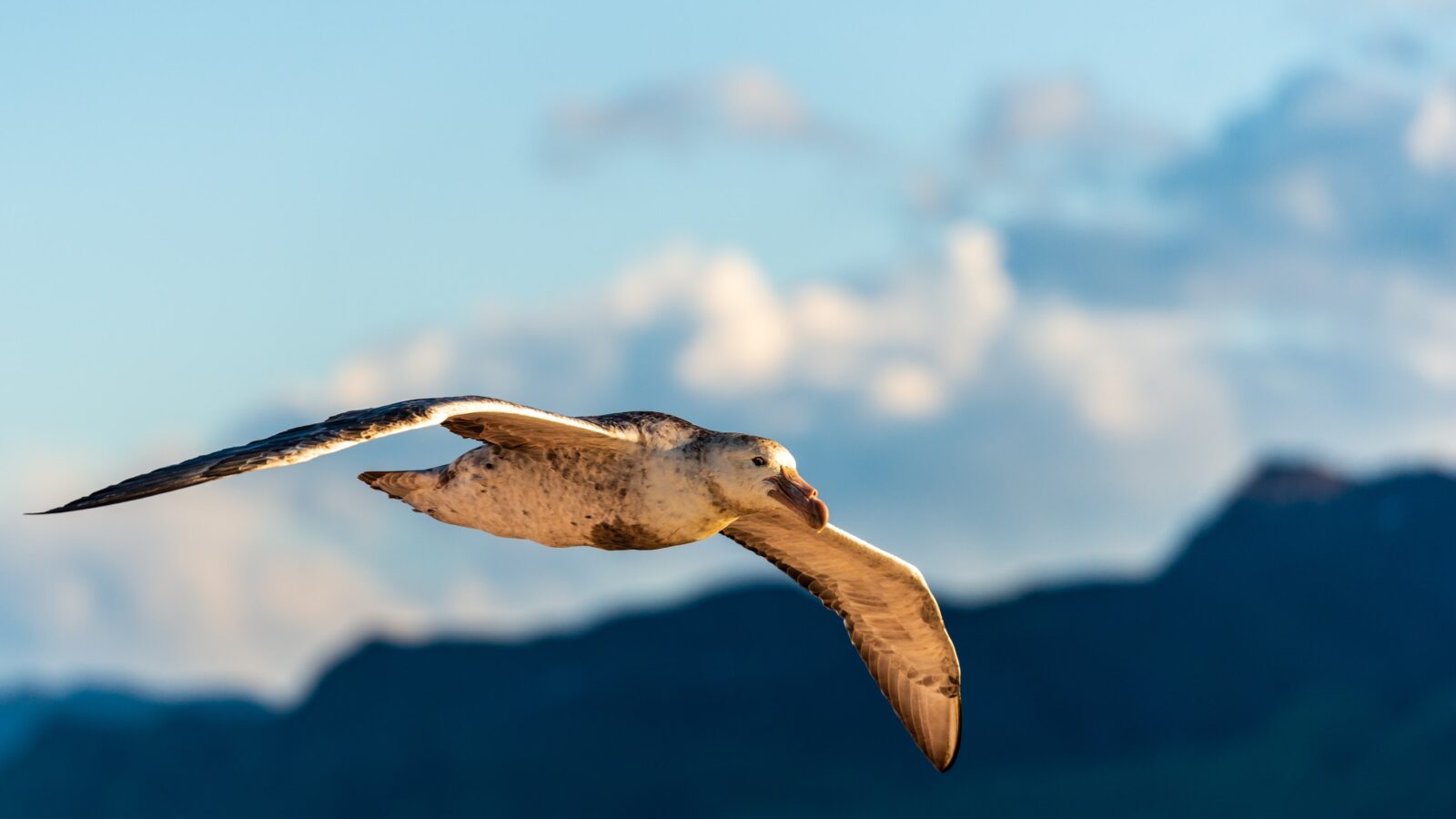
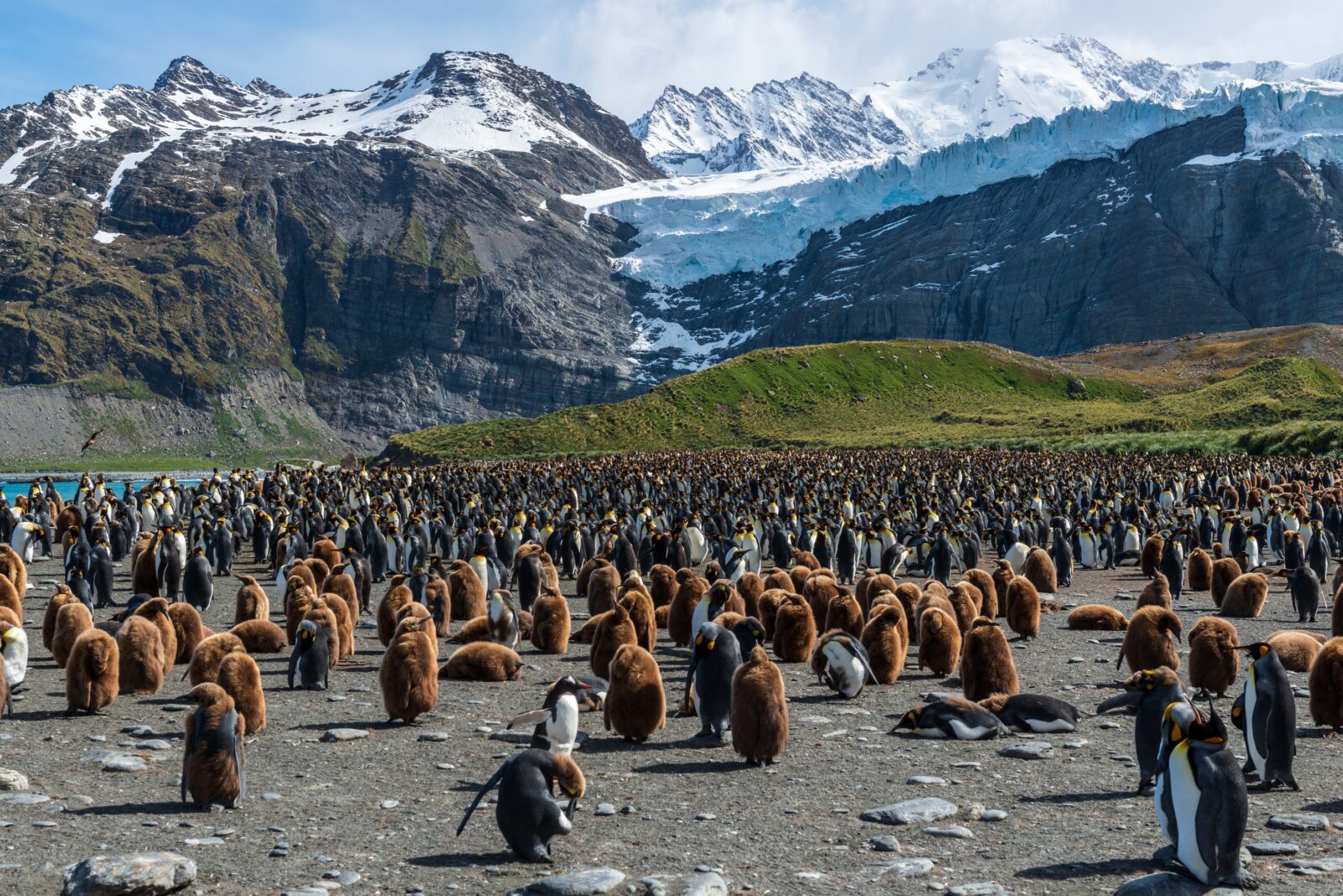
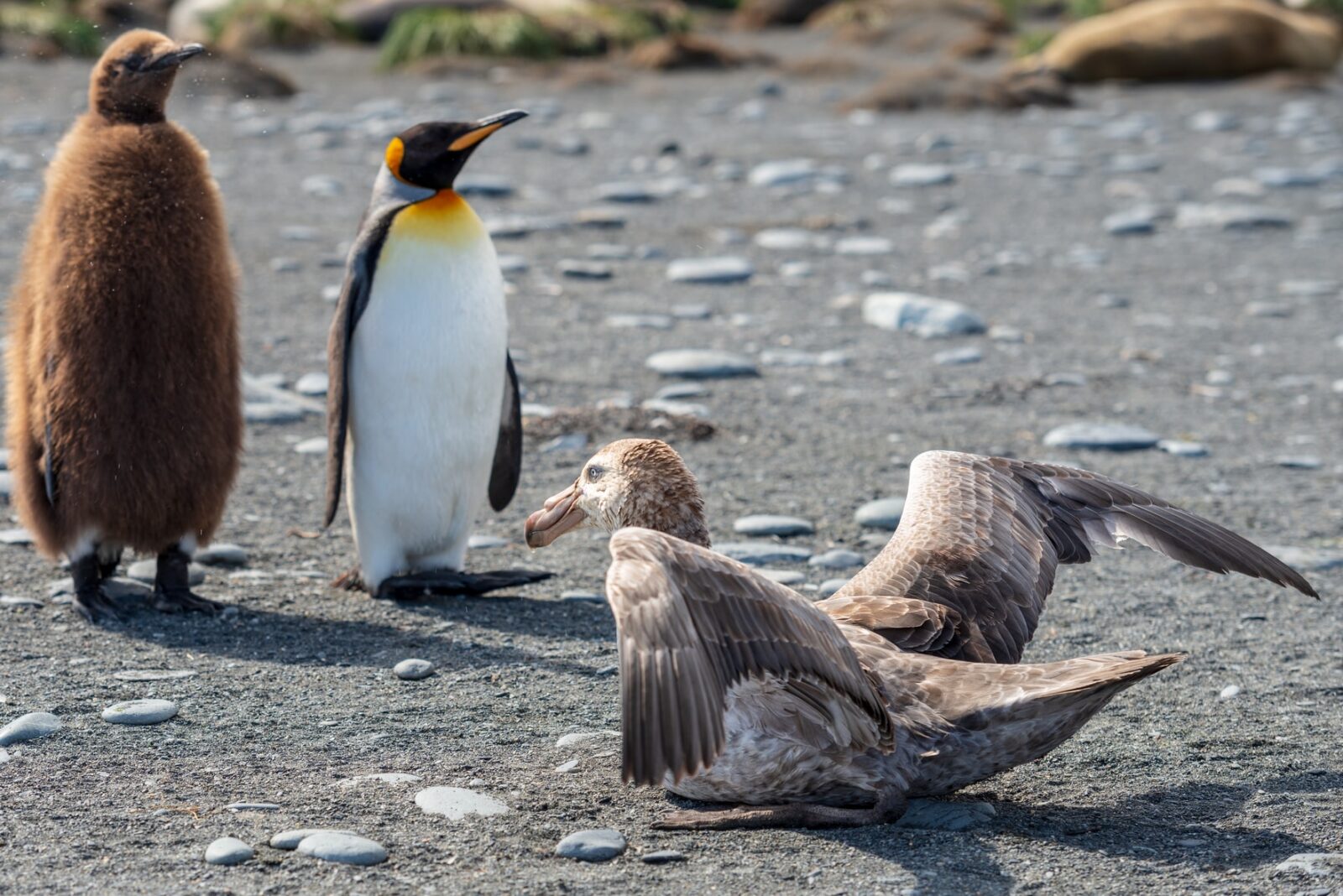
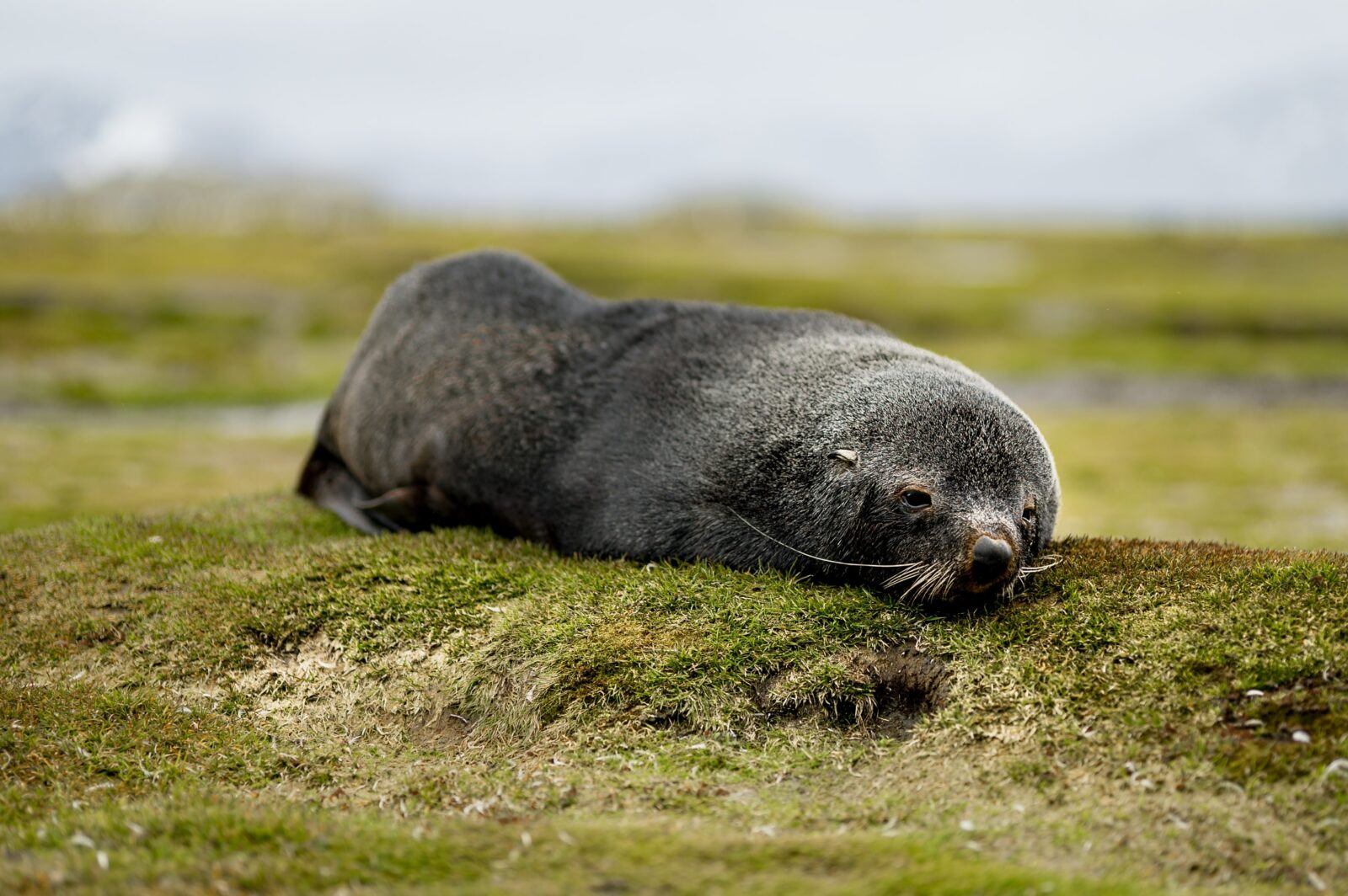
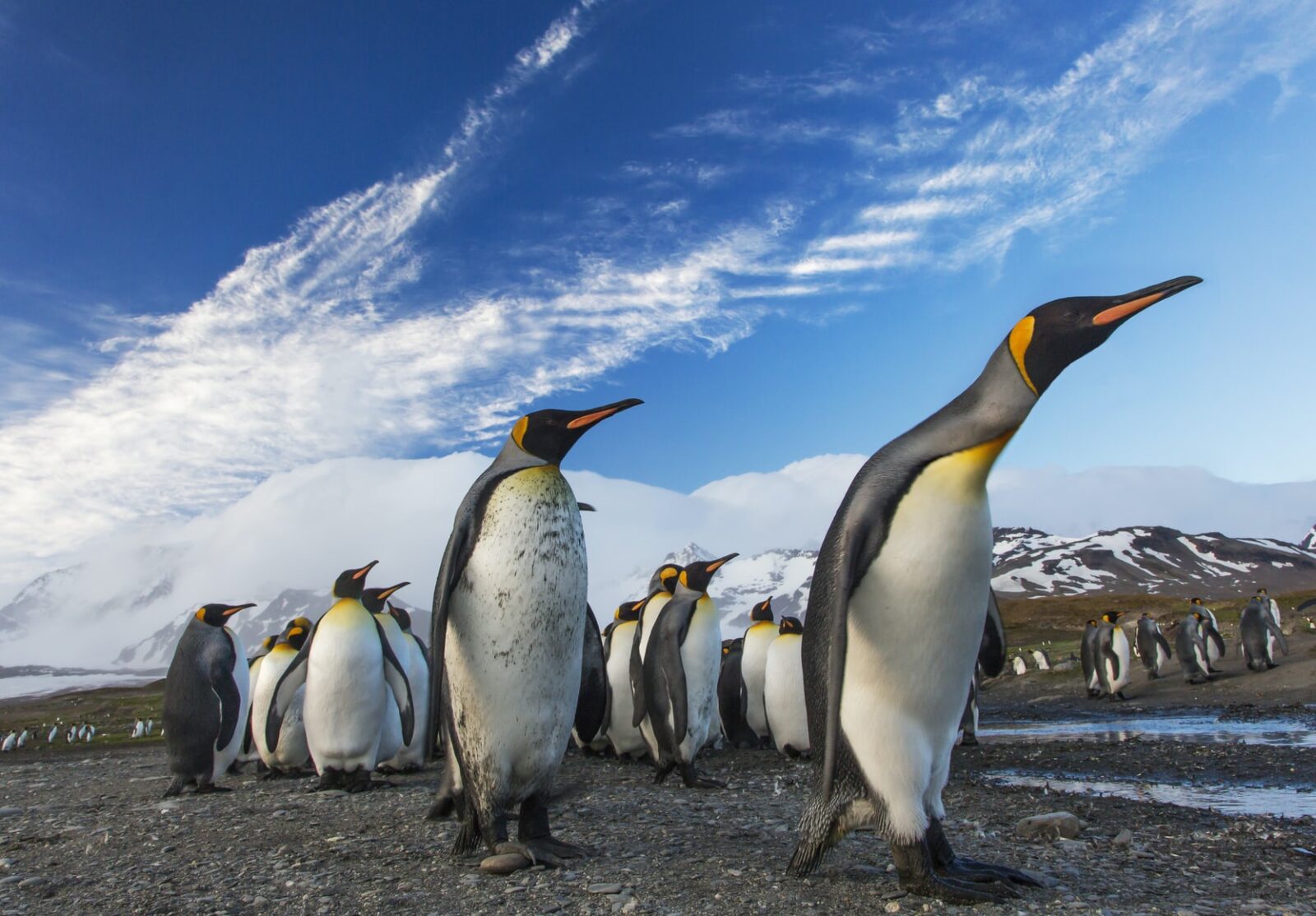
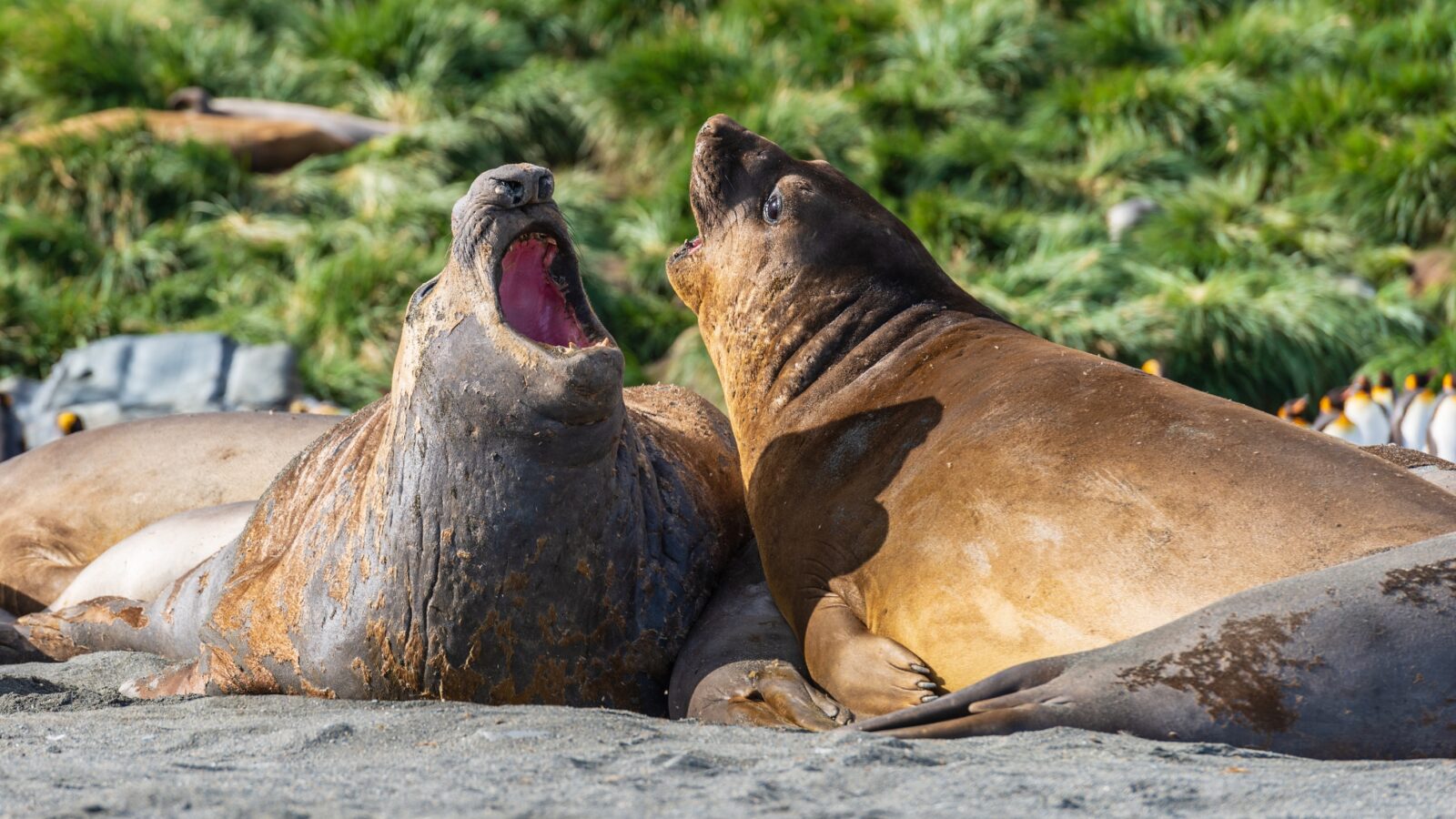
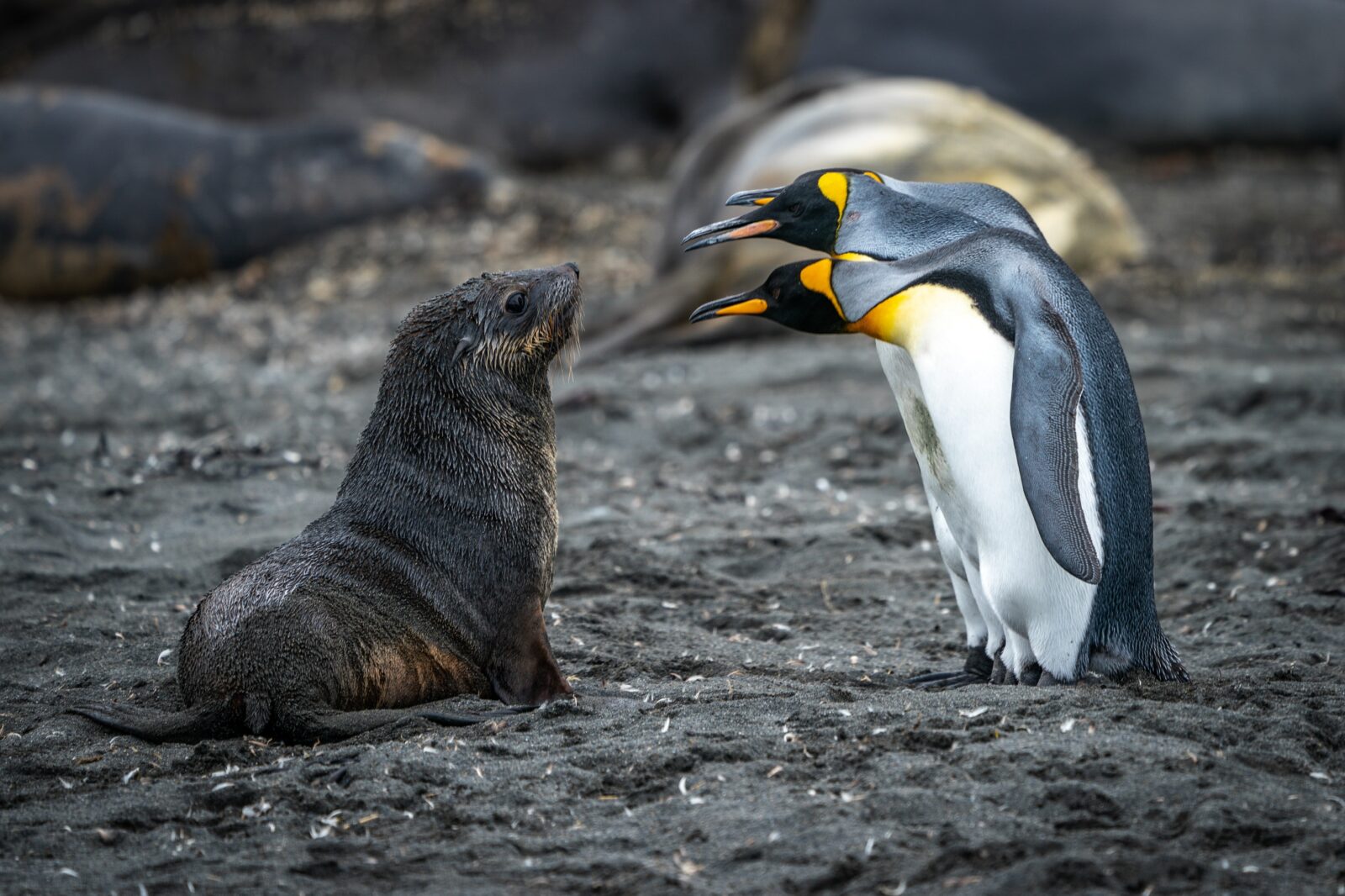
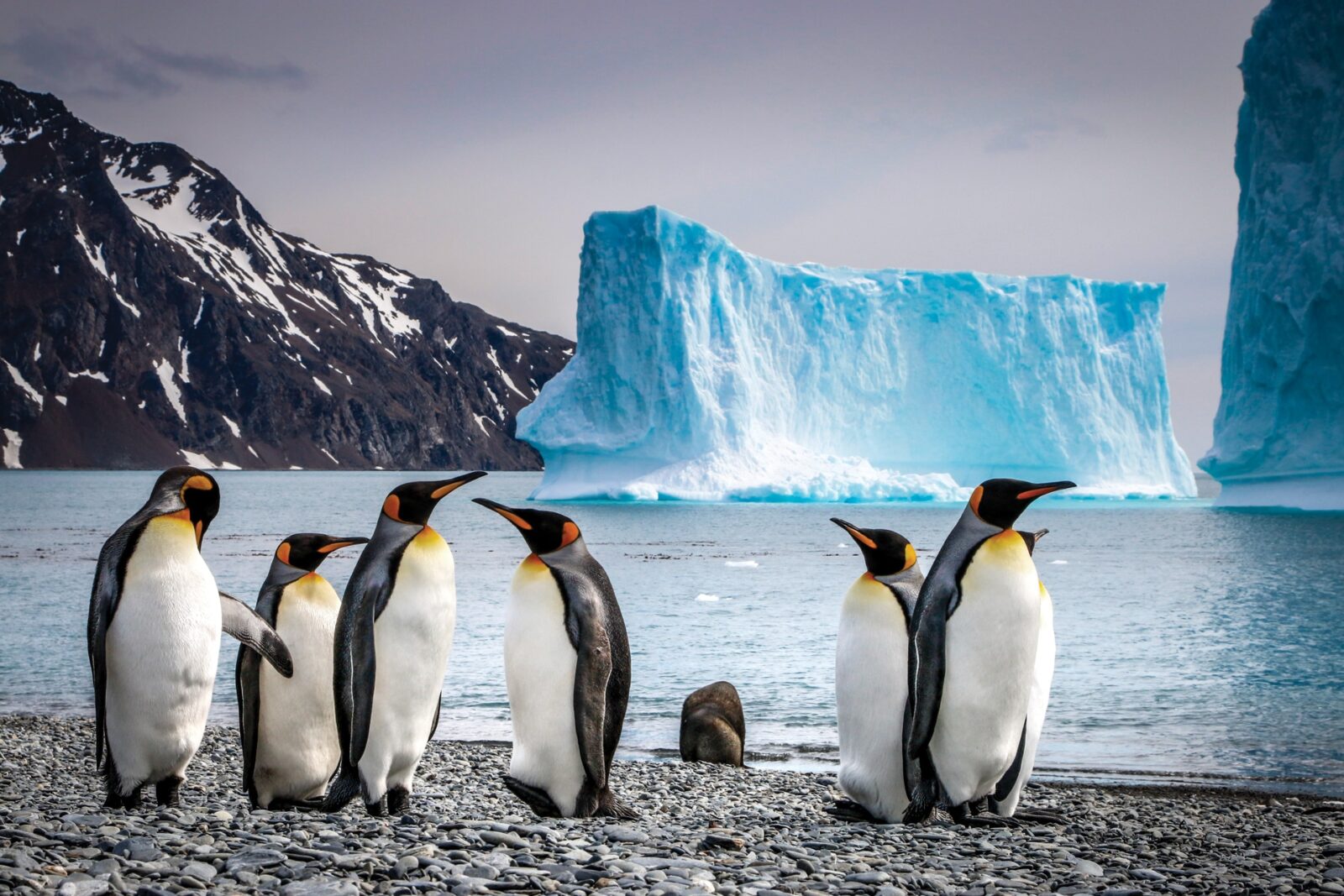
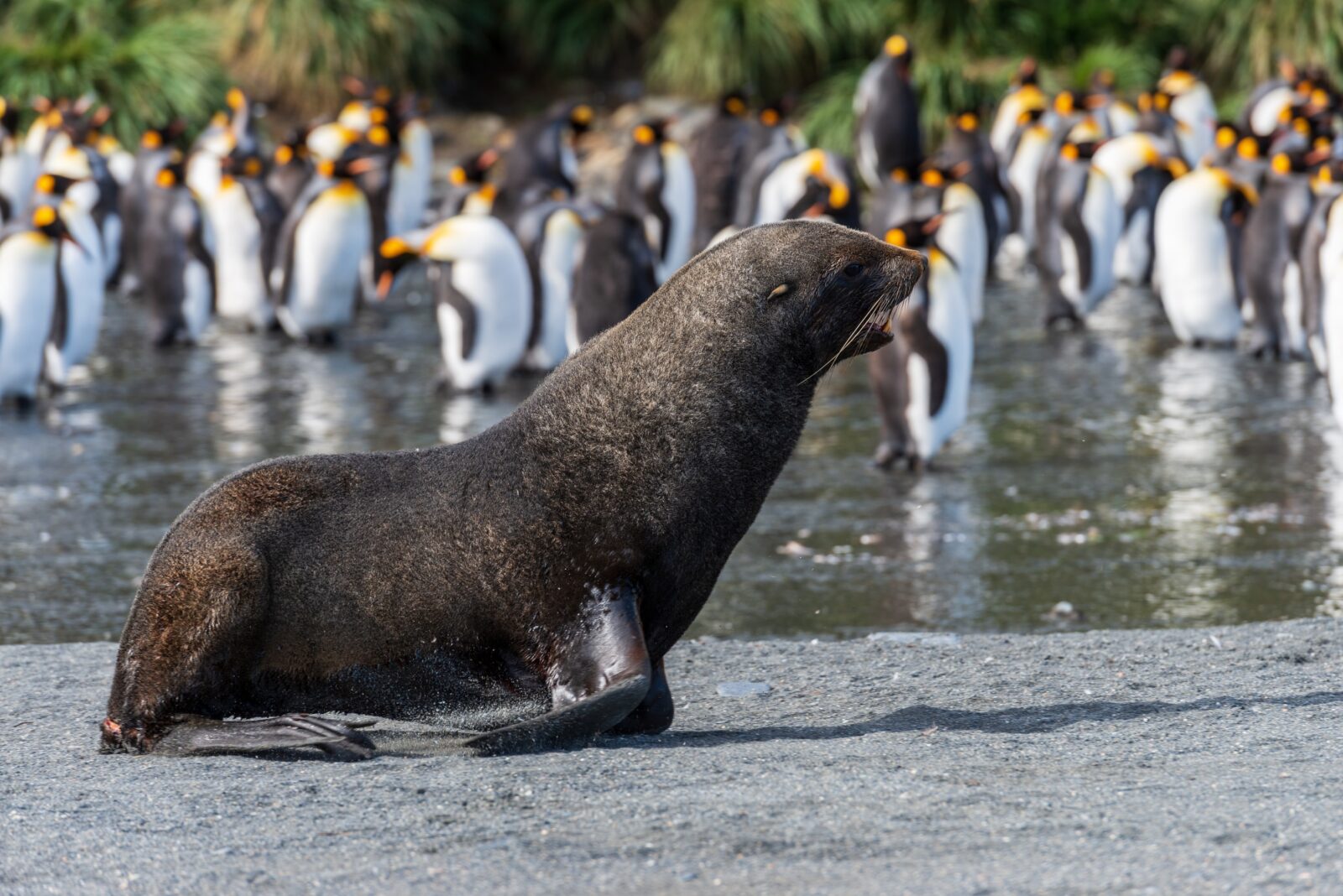
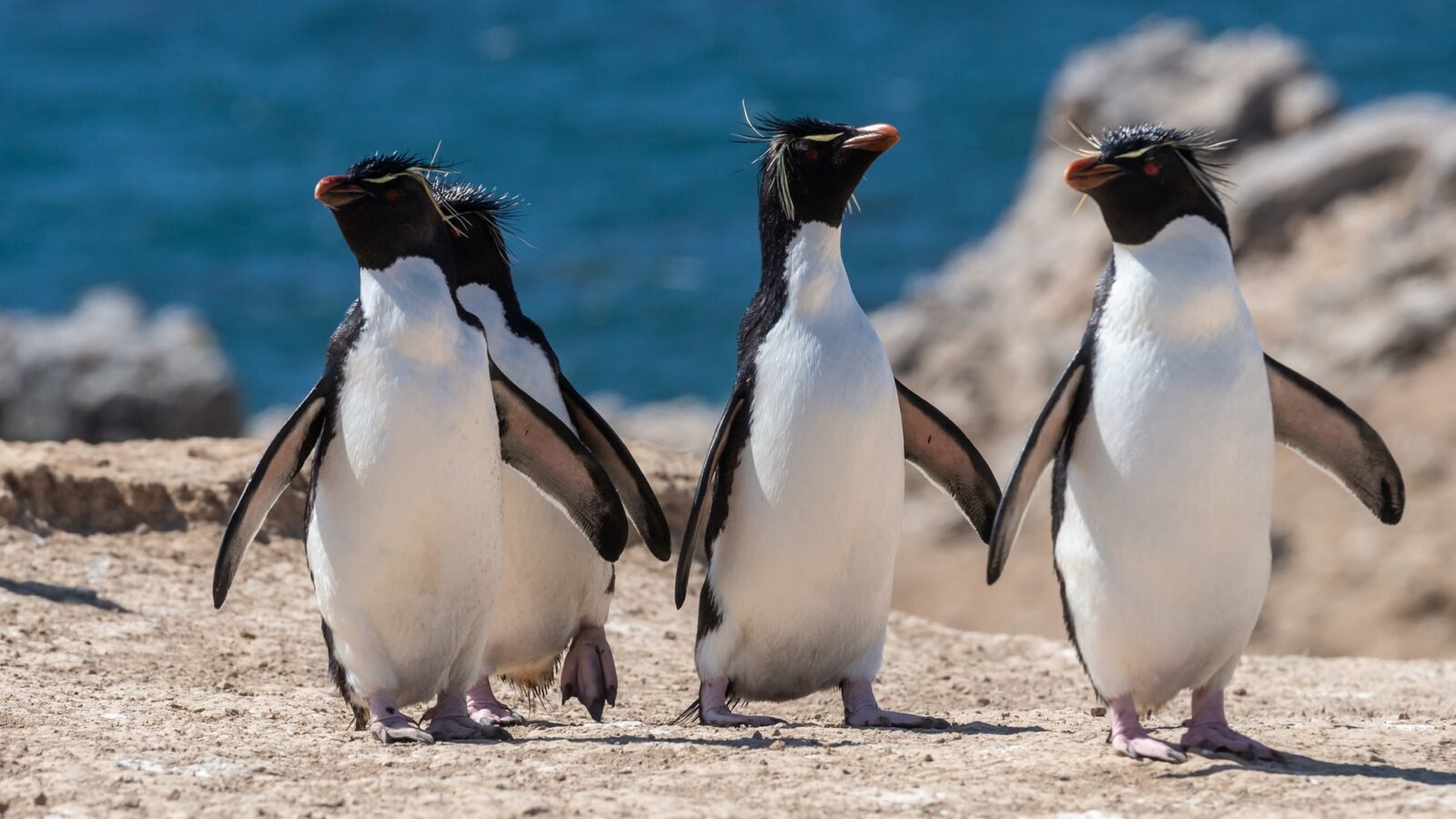
Location Highlights
South Georgia is sometimes called the “Galapagos of the Poles” because of the massive 250,000 king penguin colony at Salisbury Plain, and other wildlife, including the thousands of fur and elephant seals. The marine ecosystem is considered one of the densest examples of biodiversity in the world.
Polar history enthusiasts also love visiting. Famed British explorer Sir Ernest Shackleton first crossed the island in 1916 seeking help for his ill-fated trans-Antarctic expedition. Shackleton’s widow insisted the late great explorer be buried at the former whaling station at Grytviken.

Gold Harbour
This small and picturesque bay is famous for the thousands of King Penguins, Gentoo Penguins, Southern Elephant Seals, and the Light-mantled Albatross that breed here. At the western end of the cove, the small Bertrab Glacier frames the views from the beach as it flows into the sea.
